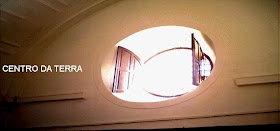 How Rammed Earth Buildings Can Save Energy
How Rammed Earth Buildings Can Save EnergyBy Markus Roselieb
Rammed earth is ideal for hot and dry climates because of its great capacity to store heat. Therefore it is perfect for Chiang Mai during the dry season where we have hot days and cool nights. The heat gets absorbed by the rammed earth walls during the day and is released into the surroundings during the night. In this way, it balances out the temperature of the surrounding area.
In the case of a high moisture content in the environment, rammed earth is very suitable as it has good moisture absorption. The humidity content of the earth when it is dried out is very low. The earth can absorb up to 30 times more water than concrete which means that in the long and heavy rainy season, the rammed earth walls will absorb the moisture of the environment, and balance out the moisture content, providing a mold- and fungus-free space.
Comparing Thermal Performance
The table below compares the thermal performance of classrooms built with two different types of walls.
Source: Earth Architecture in Western China
Red curve = indoor temperature in a rammed earth classroom (like those in Panyaden)
Yellow curve = indoor temperature in a conventional brick and concrete-based classroom
Blue curve = outdoor temperature
It is obvious from the study above that the indoor temperature of the earth classroom is always stable. In summer, it swings only between 21oC and 24oC. In winter, without any energy consumption for heating, it can reach an acceptable indoor comfort.
If you touch earth, concrete, steel and asphalt that are exposed to the sun, you will find that the different materials have different temperatures. The metal will be by far the hottest, followed by asphalt, then concrete (both are still so hot that you cannot walk barefoot on them for more than a few minutes). The earth will, however, be cool.
A concrete building is like an oven in which an air-conditioned interior space is inevitable. On the other hand, rammed earth has an excellent thermal mass because of its high density, and the high specific heat capacity of the soils used in its construction. It can store the heat during the day and release it slowly into the surroundings during the night. This energy-saving feature is one reason why we built our classrooms with this technique.

Fonte: http://www.panyaden.org/blog/conserving-energy/

































![Terra [In]cognita project: Earthen architecture in Europe](http://1.bp.blogspot.com/-36uMVOoZMLE/TazQAiZE1KI/AAAAAAAAByA/NCxO8IKqLTg/s285/logoterraincognita.jpg)
